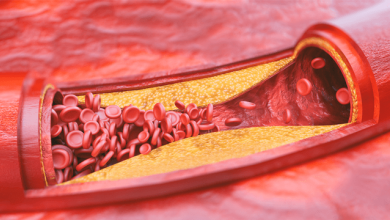Search results
Sex, Drugs, MVD, rSS and STEMI
Author(s):
Sonya Burgess
,
Craig P Juergens
,
Wesley Yang
,
et al
Added:
1 year ago
Article
Author(s):
Alda Huqi
,
Giacinta Guarini
,
Doralisa Morrone
,
et al
Added:
3 years ago
Myocardial revascularisation in patients with stable chronic angina is performed with the aim of reducing cardiovascular death, reducing myocardial infarction (MI) and relieving angina symptoms. However, contrary to expectations, modern therapy with percutaneous coronary intervention (PCI) has not had a significant impact on hard outcomes.1–5 Indeed, as also summarised in a recently published…
View more
Author(s):
Ardawan Julian Rastan
,
Friedrich Wilhelm Mohr
Added:
3 years ago
Adverse clinical consequences associated with conventional coronary artery bypass (CCAB) surgery have largely been attributed to cardiopulmonary bypass circuit (CPB), hypothermic cardiac arrest, aortic cannulation and cross-clamping. Consequently, there has been a growing interest in safer alternatives to CCAB, including off-pump beating heart bypass surgery (OPCAB, see Figure 1). Since the…
View more
Author(s):
Kevin Cheng
,
Ranil de Silva
Added:
2 years ago
Author(s):
Giacinta Guarini
,
Alda Huqi
,
Doralisa Morrone
,
et al
Added:
3 years ago
Although cardiovascular mortality has declined progressively in developed countries, ischaemic heart disease (IHD) and chronic stable angina cause a worse prognosis and poor quality of life and can dramatically increase healthcare costs.1–4 Traditionally, chronic stable angina has been interpreted as reversible episodes of myocardial ischaemia due to the presence of coronary artery disease…
View more
Author(s):
Nicolaus Reifart
Added:
3 years ago
Definition and Prevalence
Nowadays it is widely accepted to define chronic total occlusions (CTOs) of the coronary artery as lesions with thrombolysis in myocardial infarction 0 flow for more than three months (either angiographically proven or with high clinical likelihood).1 Occlusions of less than four weeks following an acute infarction are defined as acute or subacute and occlusions of…
View more
Author(s):
Gabriel Torres-Ruiz
,
Nuria Mallofré-Vila
,
Paola Rojas-Flores
,
et al
Added:
4 months ago
Author(s):
Marjan Jahangiri
,
Krishna Mani
,
Martin T Yates
,
et al
Added:
3 years ago
With evolving stent technology, improvements in percutaneous coronary intervention (PCI) techniques and the use of antithrombotic medications, the role of PCI in the treatment of left main stem (LMS) disease has expanded from being confined to salvage scenarios to intermediate- and lower-risk patients. However, the role and benefits of coronary artery bypass grafting (CABG) surgery in the…
View more
Author(s):
Jacques Machecourt
Added:
3 years ago
Drug-eluting stents (DES) have been recognised as a ‘breakthrough technology’ since 2003 due to their unique capacity to reduce clinical restenosis. The difference in restenosis rates, as assessed by angiography, was so large between DES and bare-metal stents (BMS) in the first trials – 0% versus 26% after six months in the first published trial (RAVEL) with the sirolimus-eluting stent (SES),1…
View more
The Core Message of ISCHEMIA
Author(s):
Kreton Mavromatis
,
William E Boden
Added:
3 years ago
Article














